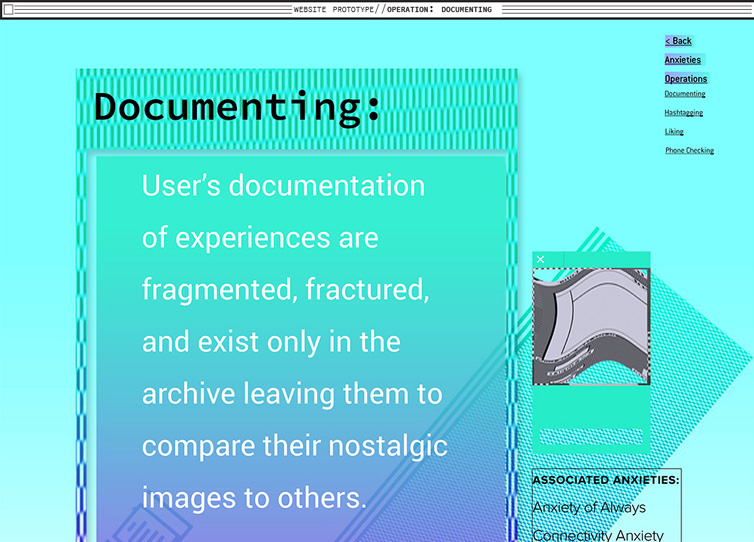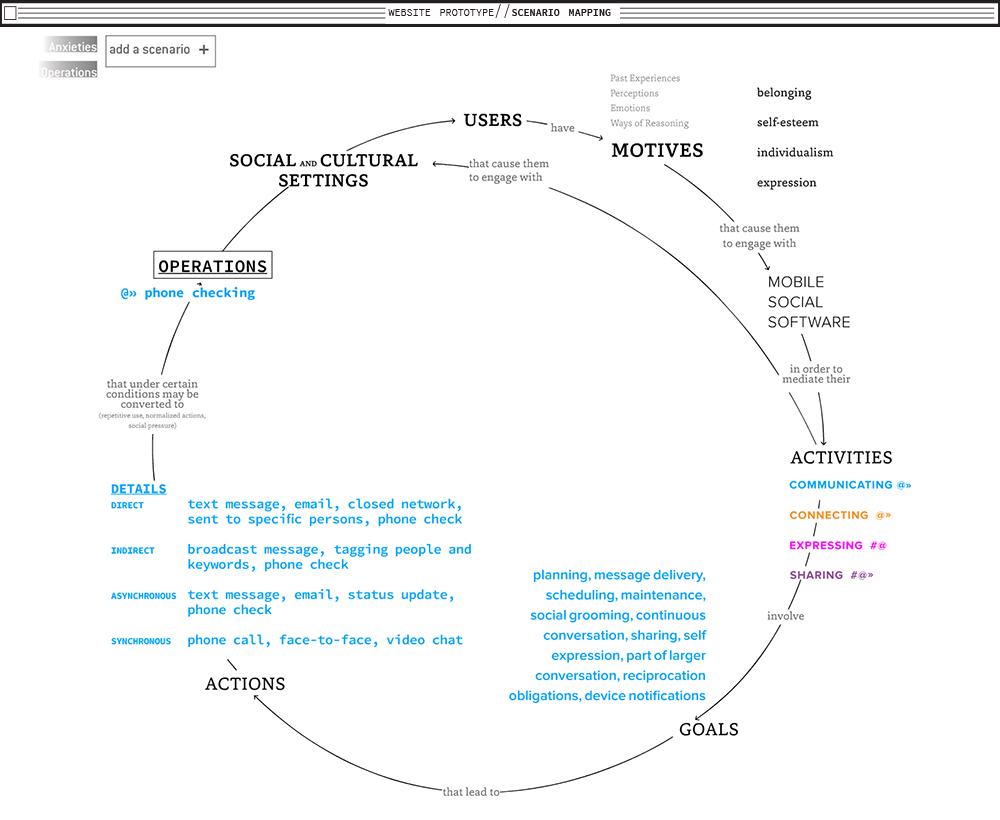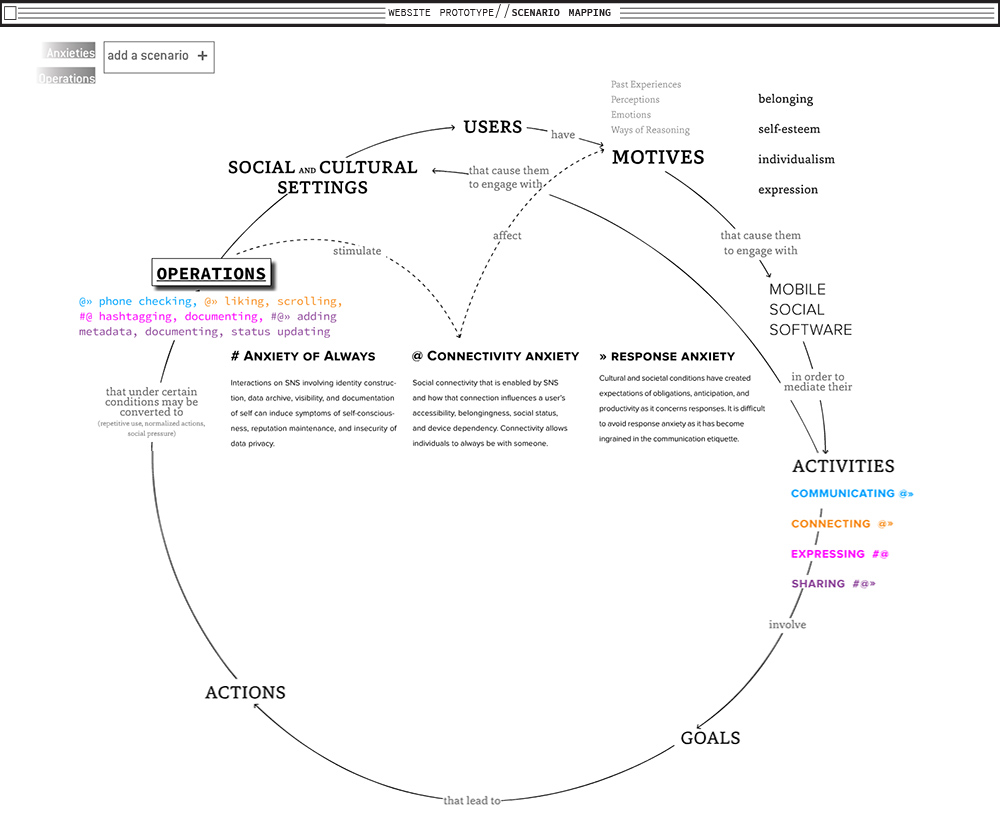The Masters of Graphic Design program at North Carolina State University encourages a deeper knowledge of a user-centered discipline and more purposeful, individually driven design practices. Student inquiry into contemporary and emergent design issues prepares graduates of the program for leadership positions that both evolve the profession and advance the discipline.
As part of the thesis project, I completed a prototype of a resource to be used by UX and Product Designers to help them understand how the products they build can elevate human anxieties.
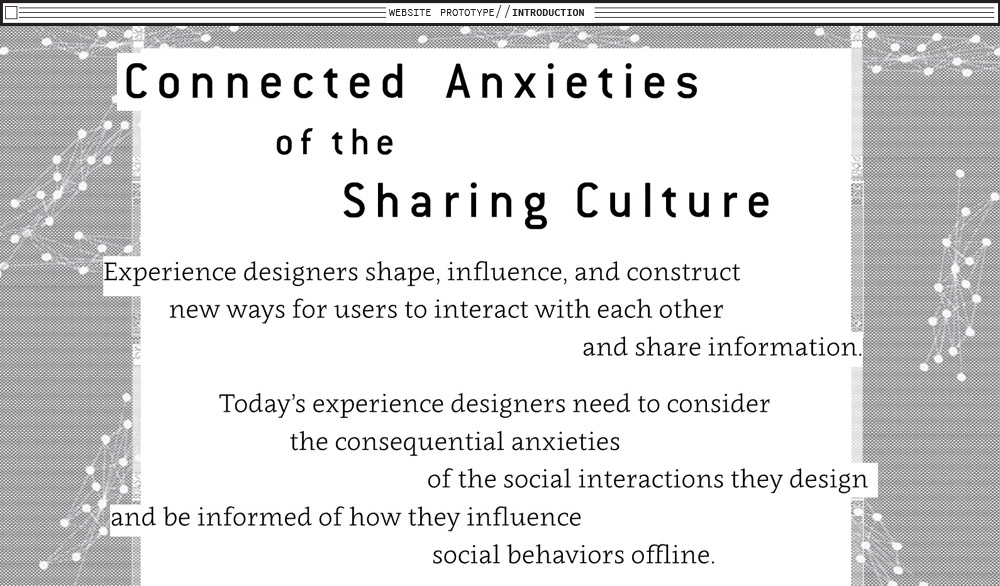
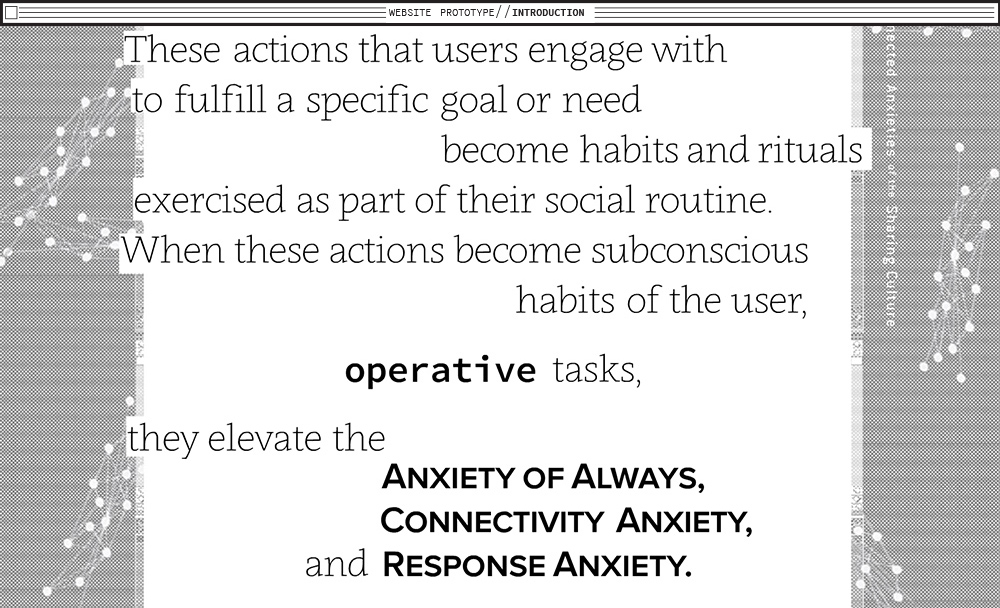
First, I defined these anxieties as Anxiety of Always, Connectivity Anxiety, and Response Anxiety. I investigated how using social networking site (SNS) applications, like Facebook, Instagram and Twitter, impact these anxieties as a result of routine, repetitive interactions with the platform. Applying the Activity Theory framework allowed me to add environmental and contextual cues to have a deeper understanding of the connection between human needs and motivations for using SNS, and the resulting anxieties associated based on the specific activity completed. My aim with this research was to help experience designers anticipate consequential anxieties of the products they make.
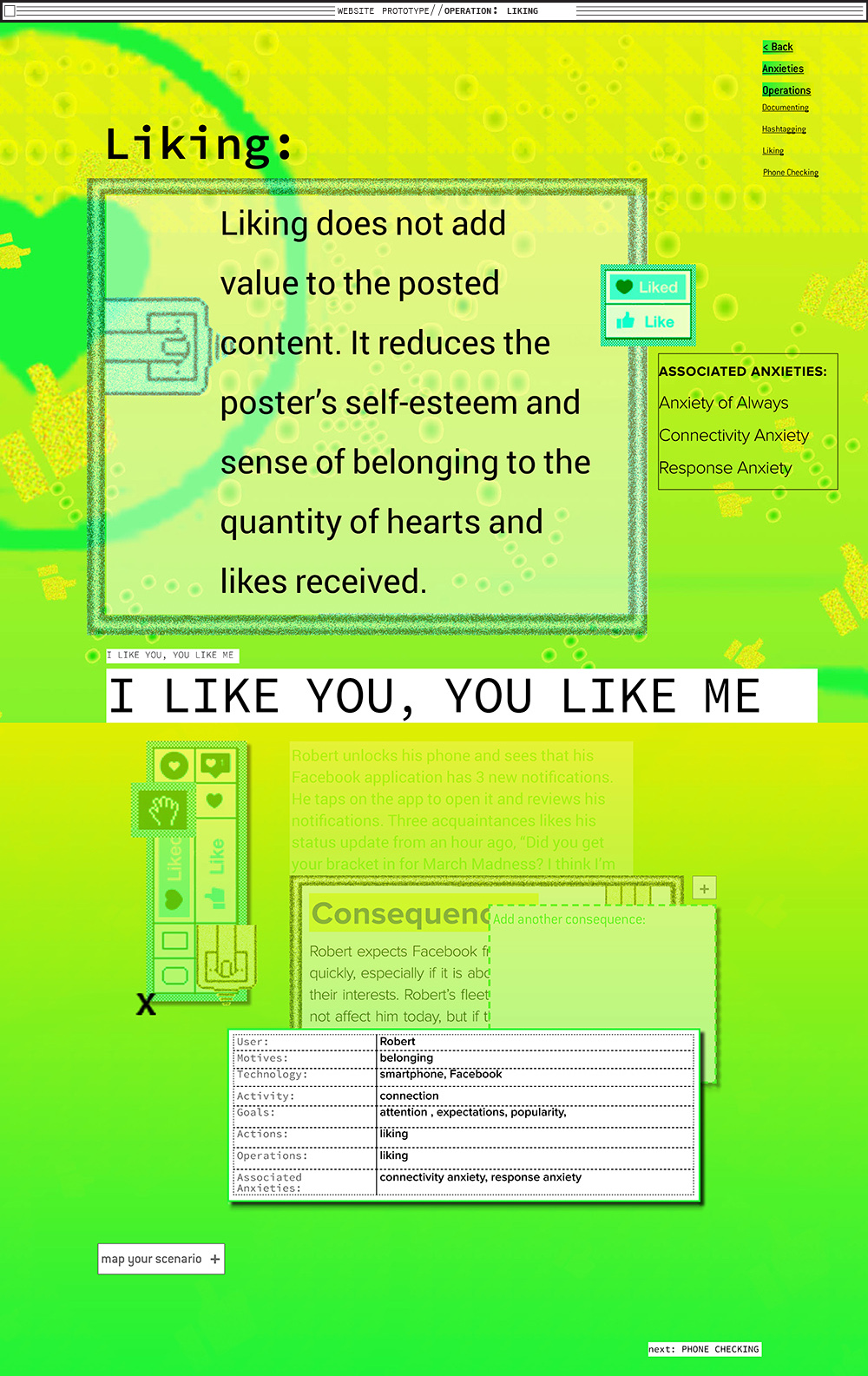
Through a website prototype, I introduce my findings of what the anxieties are and how they relate to experience design. From this introduction, I discuss how the operations—or subconscious behaviors of users—are the impetuses for stimulating certain anxieties. Through scenarios and provocations, I present four of the common operations—documenting, hashtagging, liking, and phone checking—to reveal how a user’s everyday interactions with the smartphone SNS applications elevate the anxieties.
The thesis is a prototype for an interactive, live website that would evolve and grow through participant contribution. Participants would add possible symptoms of the anxieties, and map scenarios using a diagram that applies Activity Theory. The commentary and rhetoric of the website intend to provoke conversation among experience designers as they contemplate the consequences of the products they design for social use.
Website prototype (requires flash player).
Video Website preview (does not require flash player).
Key Terms:
Anxieties: feelings of anxiousness and stress relating to expectations of relationships from the constant presence of a smartphone and ability to connect at anytime (Turkle, 2011).
Anxiety of Always: involves constructing an online identity, maintaining a permanent archive of personal data, managing visibility of personal data, and documenting activities. These actions induce symptoms of elevated self-consciousness, constant reputation maintenance, and a mistrust of privacy.
Connectivity Anxiety: connectivity enabled by social networking applications influence a user’s accessibility to others, belongingness, social status, and device dependency. Connectivity allows individuals to always be with someone, even when they are alone in the physical space.
Response Anxiety: cultural and societal conditions have created perceived expectations of obligations, anticipation, and productivity as it concerns responses from another user which results in symptoms of apnea, nervous and anxious feelings in anticipation of response, and disrupted attention.
